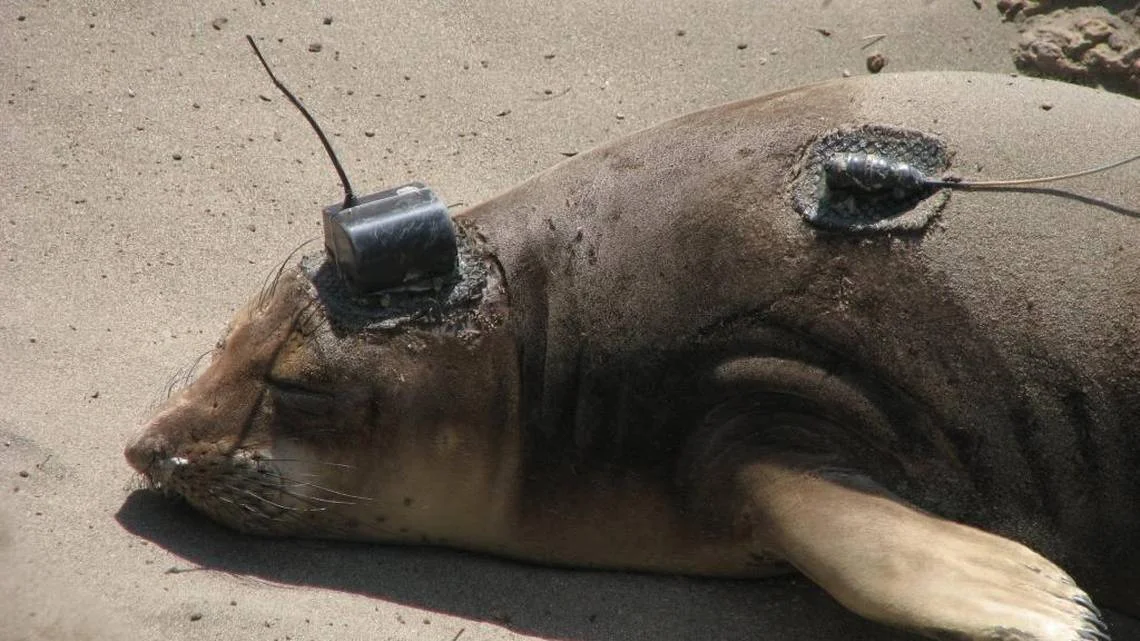By comparing the bones of ancient and contemporary seals, researchers say a particular biting style helped the marine mammals’ landlubber ancestors move into the oceans.
Read MorePinniped researcher’s funny and insightful presentation at Grad Slam 2019 answers the burning question: Why do male and female elephant seals look so different?
Read MoreDr. Nancy Foster Scholar Sarah Kienle researches how northern elephant seals that breed within Monterey Bay National Marine Sanctuary feed.
Read MoreThis oceanbites post was contributed by guest author Sarah Kienle. Sarah is a PhD student at the University of California Santa Cruz. Sarah is a NOAA Nancy Foster Scholar who studies marine mammals, and recent research took her and her lab to Antarctica to study leopard seals. The original version of this post and more information about the trip and research in the Costa lab can be found on the Costa Lab website.
Read More…Great white sharks typically attack from below and behind their prey. The relationship between predator and prey is a balance, between attack and avoidance. UC Santa Cruz researcher Sarah Kienle is studying elephant seal feeding behavior at Guadalupe Island off Baja California. Her collaborators have observed that seals returning to that island are likely to approach the beaches from below. …
Read MoreWhen female elephant seals dive for food, they stay down 20 to 30 minutes. Their exact diet is not yet documented.
Read MoreIn May, the beach is covered in seals. Even elephant seal researcher Sarah Kienle was impressed when she and her family drove south from Santa Cruz to give Cambrians an update on her work.
“I’ve been here in the offseason, so I’ve never seen them line the beach like this,” she said.
Read MoreEvery winter, thousands of visitors flock to the Piedras Blancas elephant seal rookery to watch the antics of pupping and mating season, and hopefully learn about where the seals go once they leave the viewing area.
Read More






